CQ160CW 2019 Contest
Dave VE9CB / VO2AAA, Frank VO1HP and I were active during the 2019 CQ160 CW contest from the lighthouse at Point Amour, Labrador. This was truly a field day type of operation, and fittingly Winter Field Day was on the same weekend!

Monday January 14: Four days before starting the drive to Point Amour, we found out that the final 2km of the road to the lighthouse hadn't been plowed since the Fall and was blocked with snow.


Friday January 18: I drove ~900km from near Ottawa, ON to Baie Comeau, QC where I met up with Dave. After Dave's ~600km drive from near Fredericton, NB, we transferred all of Dave's gear from his car to my SUV.
Saturday January 19: We started the ~1100km drive from Baie Comeau, QC to Happy Valley-Goose Bay, NL. We headed North along Quebec highway 389, crossing the Manic-5 hydroelectric dam.

Dave brought along a Chinese made 2m/70cm rig and a mag-mount antenna and we worked about 15 stations on OSCAR satellites AO-91 and AO-92 from some very rare grids in Quebec as VE2FUA (my other call) and Labrador as VO2AAA.
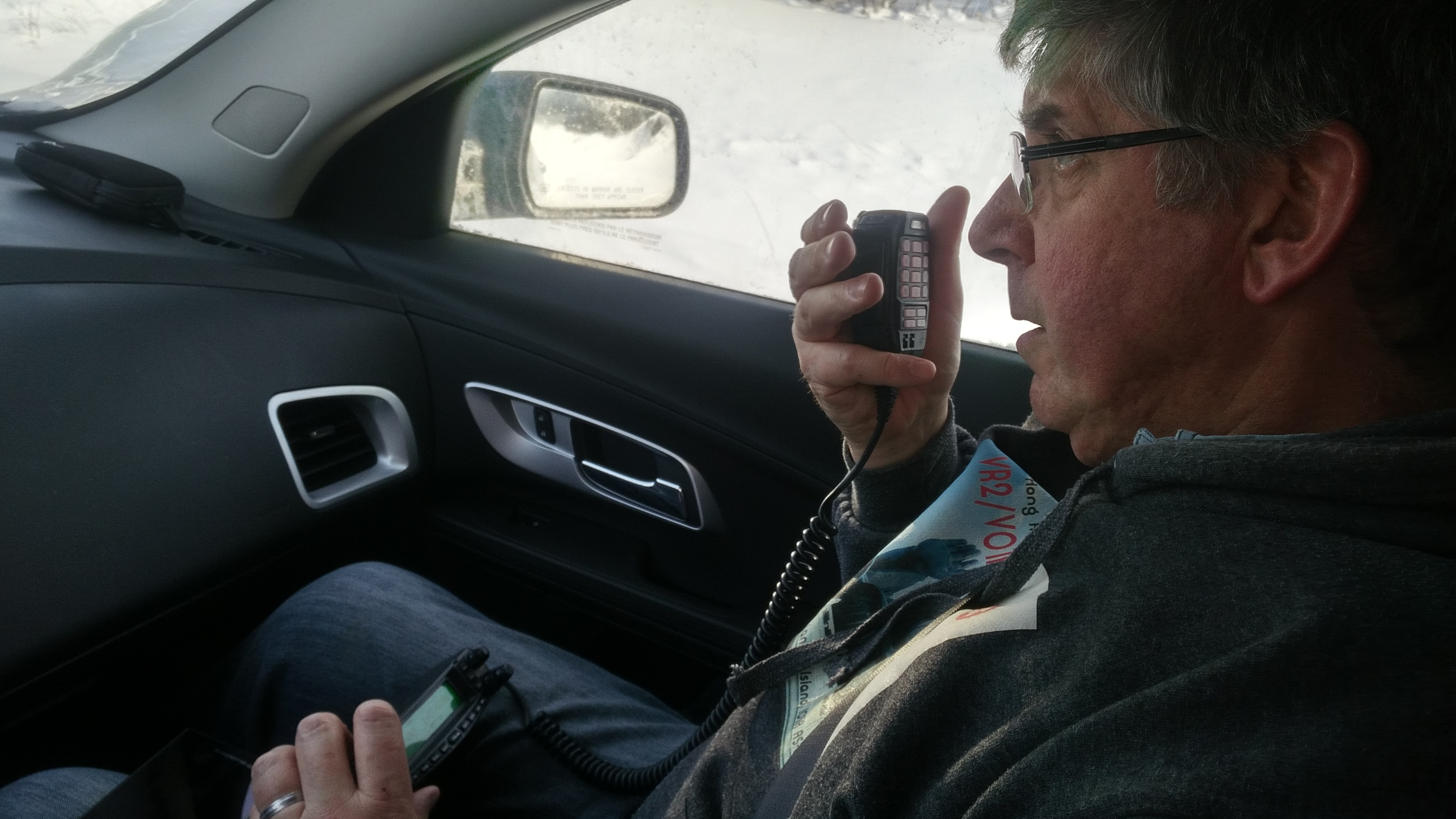

Heading West along the Trans-Labrador Highway, with temperatures ranging from -30șC to -35șC, and stops in Labrador City and Churchill Falls, we arrived in Happy Valley-Goose Bay 13 hours later.
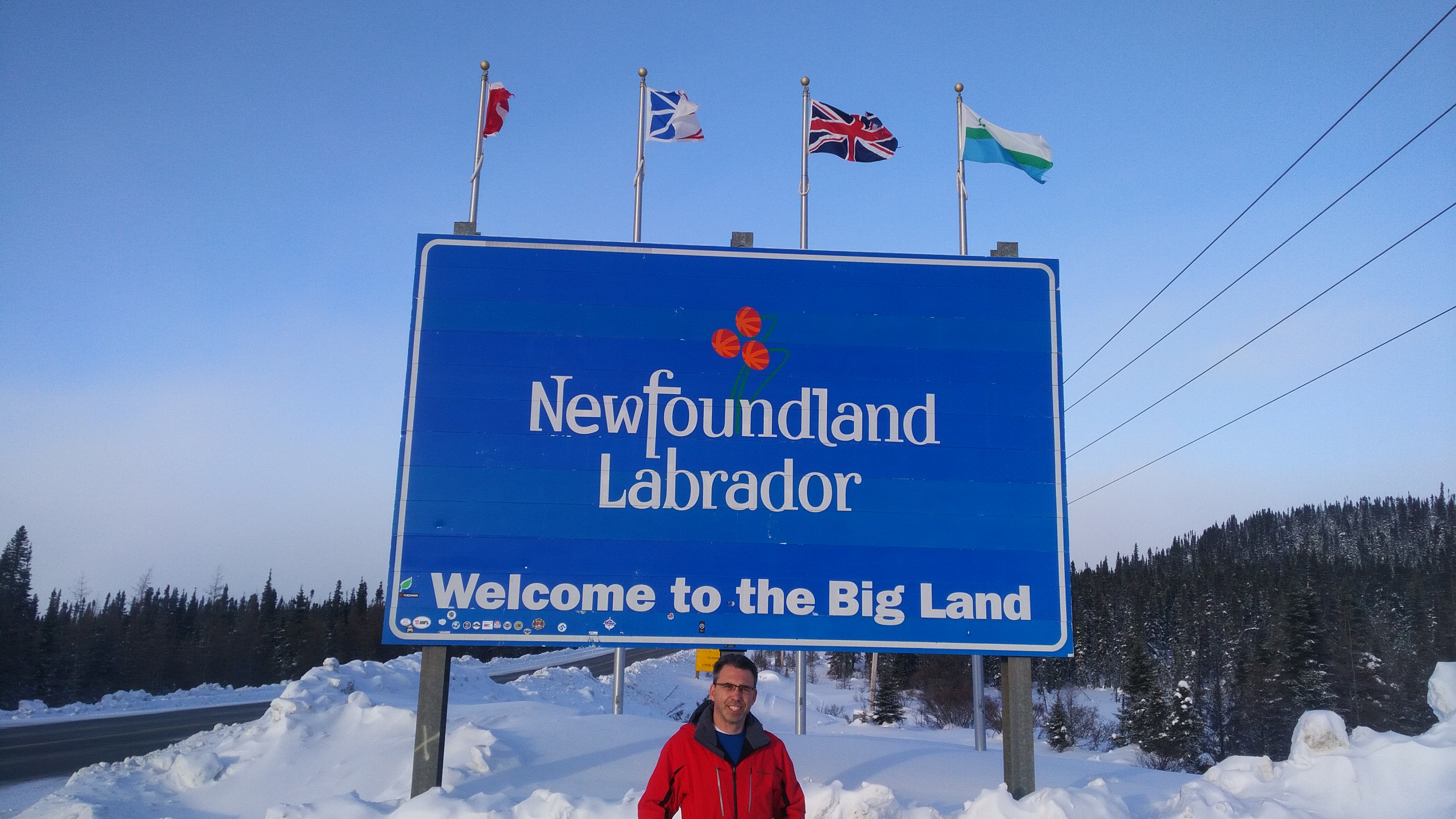
Sunday January 20: We left Happy Valley - Goose Bay for the ~600km / 8 hour drive to Forteau, on the Labrador South coast. Along the way we stopped to help a family that was stranded on the highway. We arrived in the Forteau late in the afternoon, just beating out a winter storm, and checked into our hotel.
Monday January 21: We woke Monday morning to the predicted winter storm. Since we couldn't get to the lighthouse, we stayed in the hotel room and cut three 130ft elements for the transmit antenna and two sets of twenty four 64ft radials. The plan was for a 3-element vertical array, switchable between NE and SW. Dave also took some time to work some of the satellite passes. Later in the afternoon when the storm had subsised a bit, we drove to L'Anse au Clair and met up with Bonnie Goudie, the Executive Director of the Labrador Straits Historical Development Corporation. Bonnie gave us some instructions about the buildings at the lighthouse site and provided us with keys.
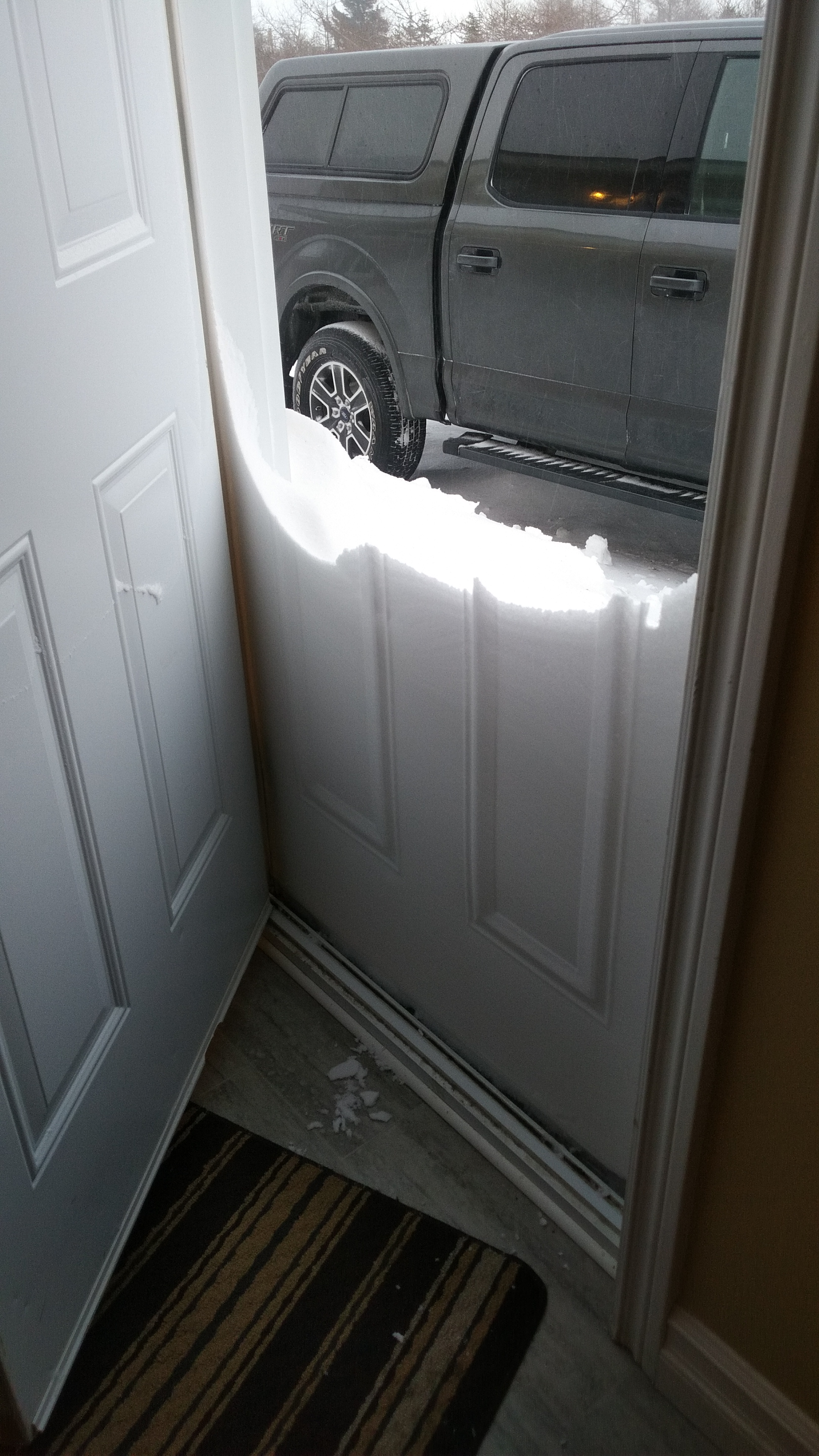

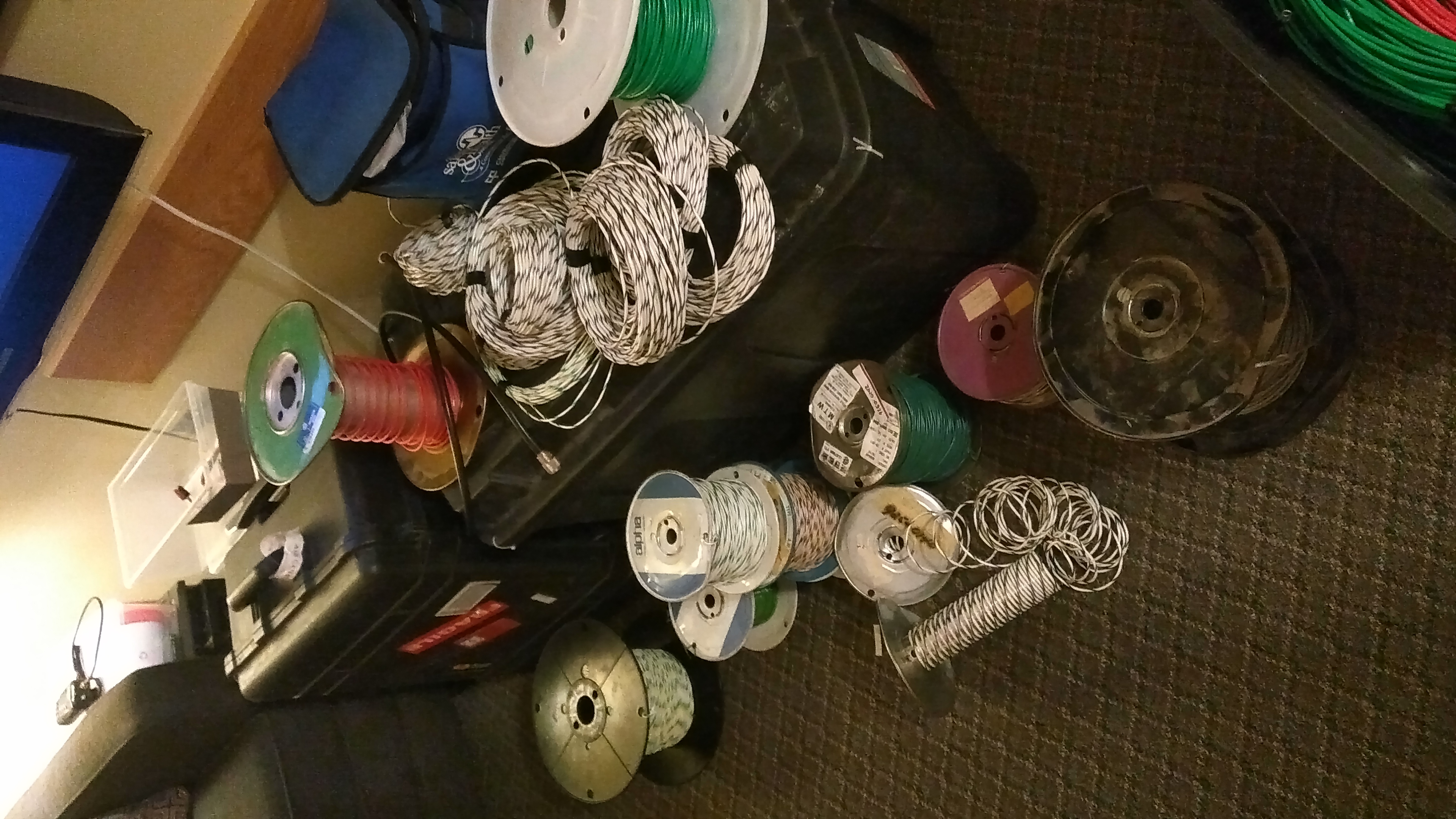
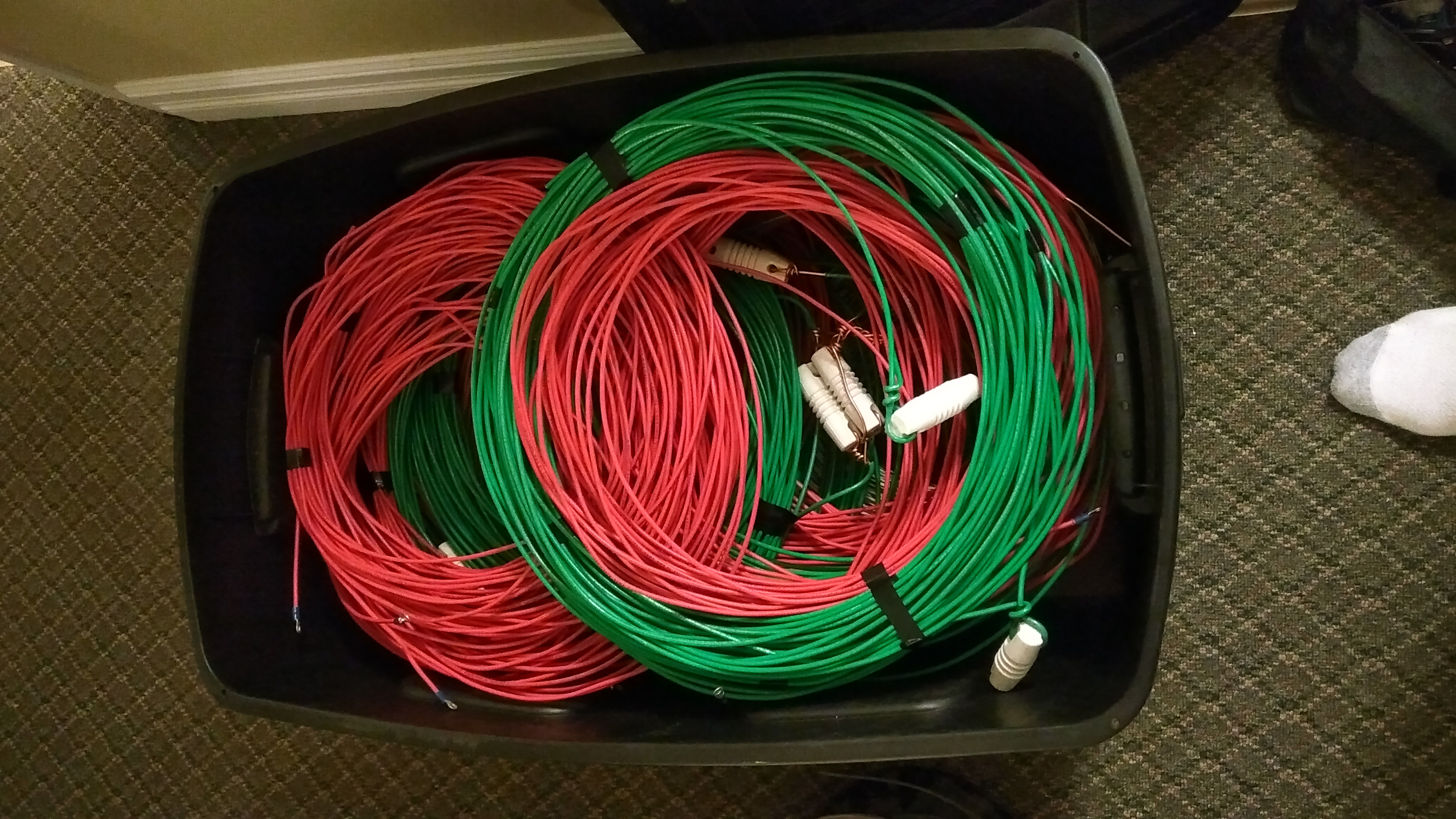

Tuesday January 22: We met up with a friend who agreed to loan us his skidoo and komatik. Loaded with some of our gear, we drove the skidoo and komatik the final 2km to the lighthouse. After unloading everything and re-familiarizing ourselves with the site, Dave stayed at the lighthouse to start setting up equipment while I drove to Blanc Sablon, QC to pick up Frank VO1HP, who flew in from St. John's, NL. Despite the efforts of the wind, we managed to get the ropes up for the TX antenna before darkness set in.






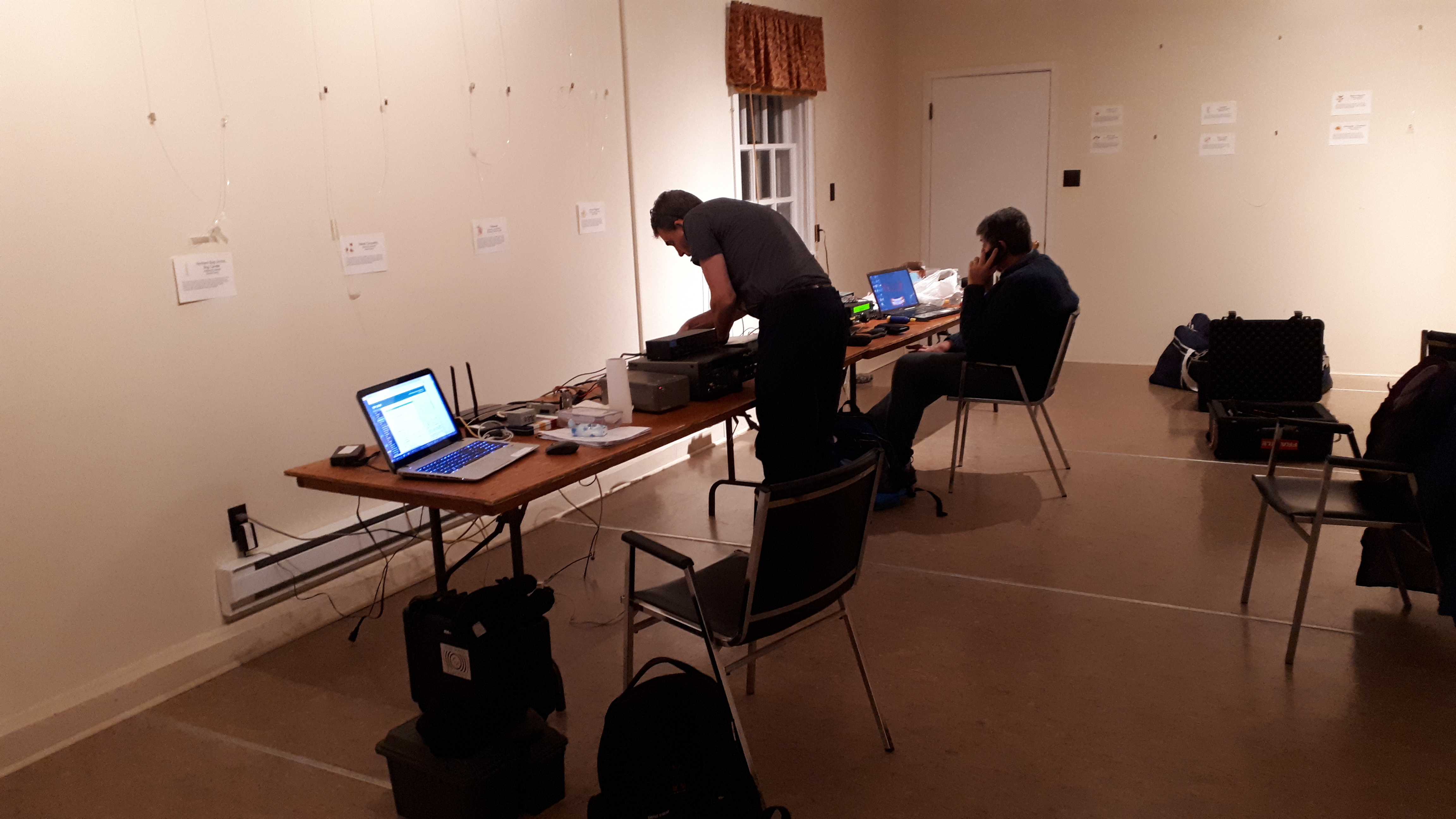
Wednesday January 23: Still battling the wind, we get the Inverted-L up and radials laid down. The station is finally together and we are on the air!
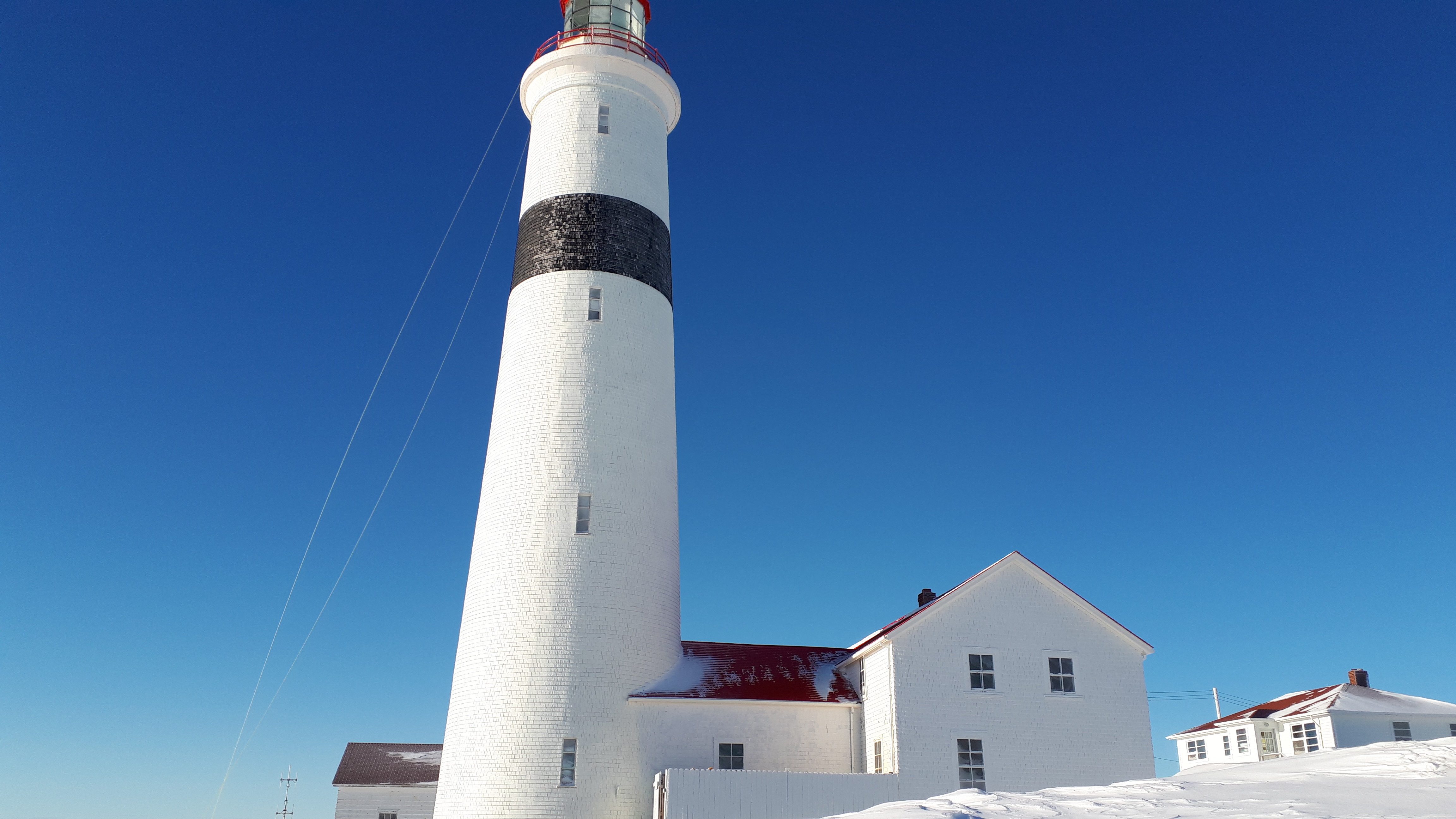


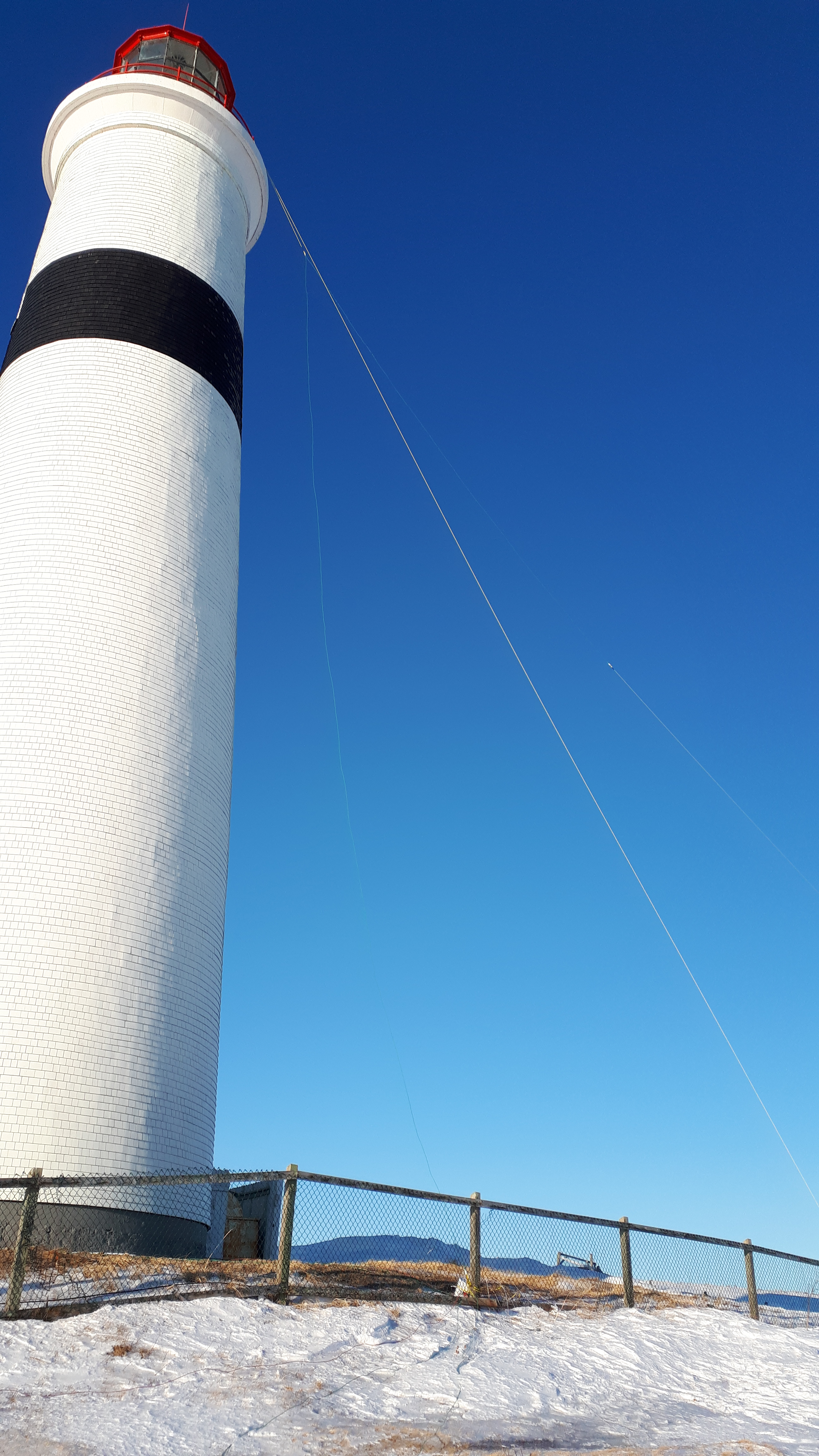
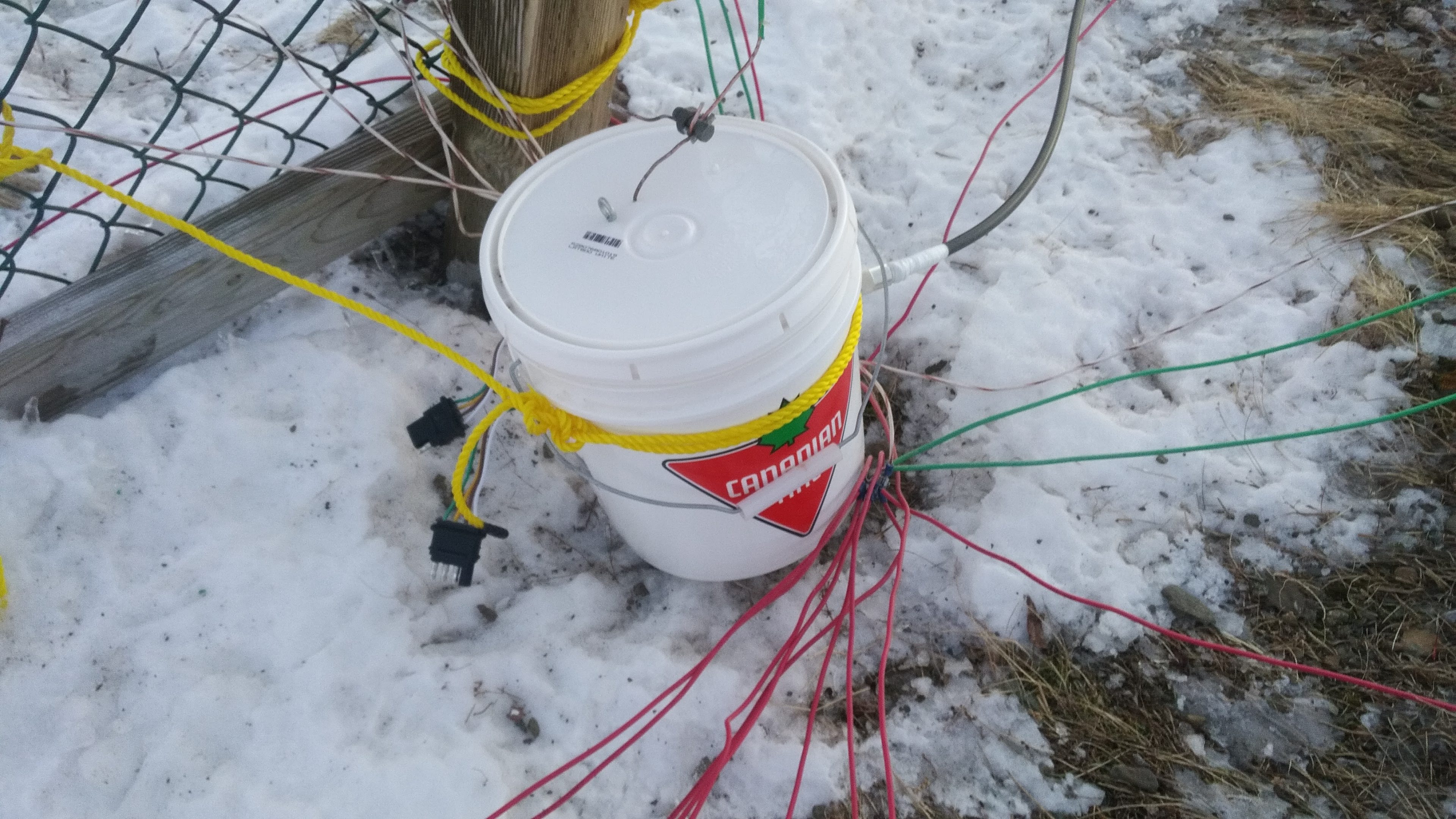
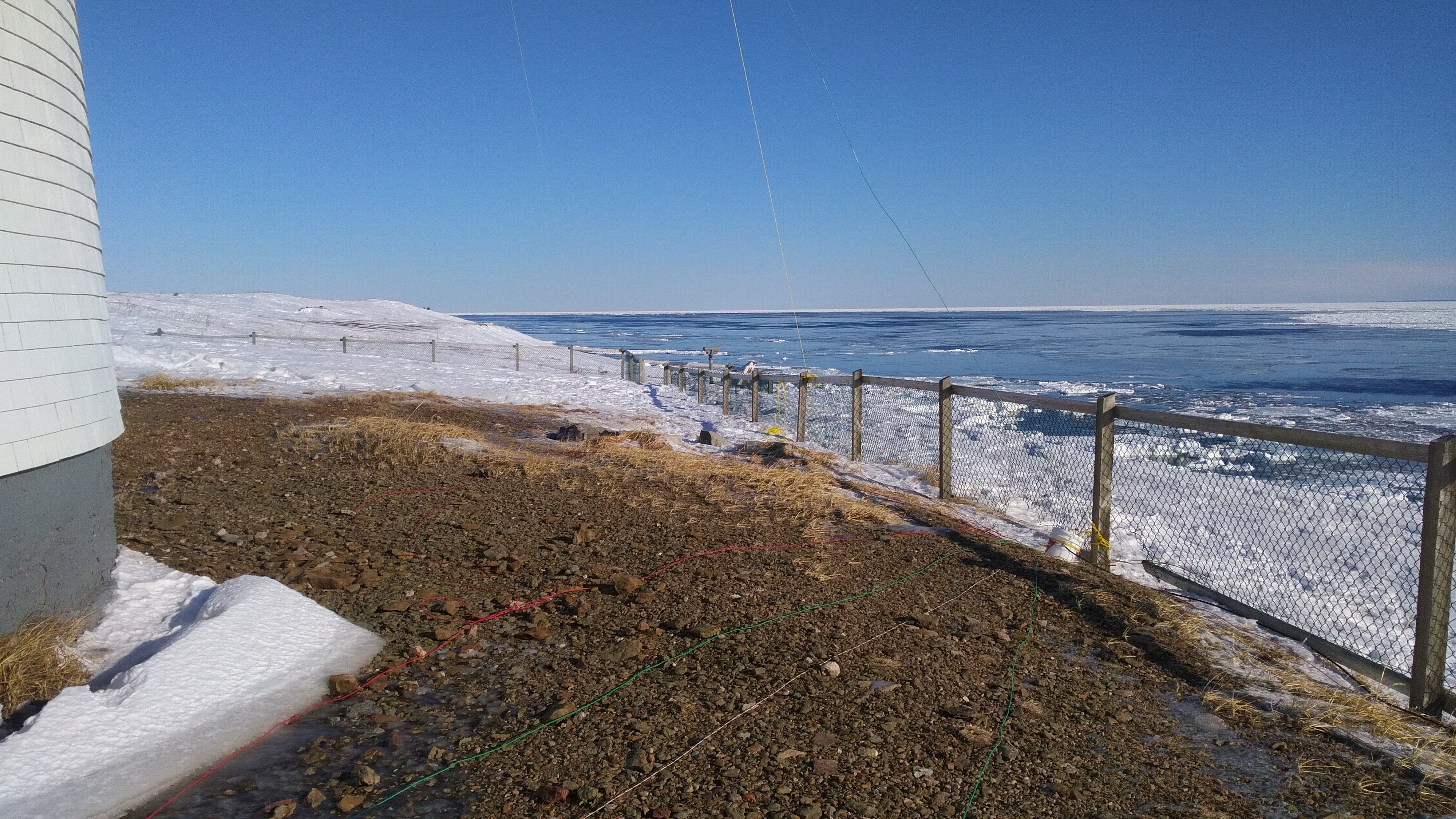
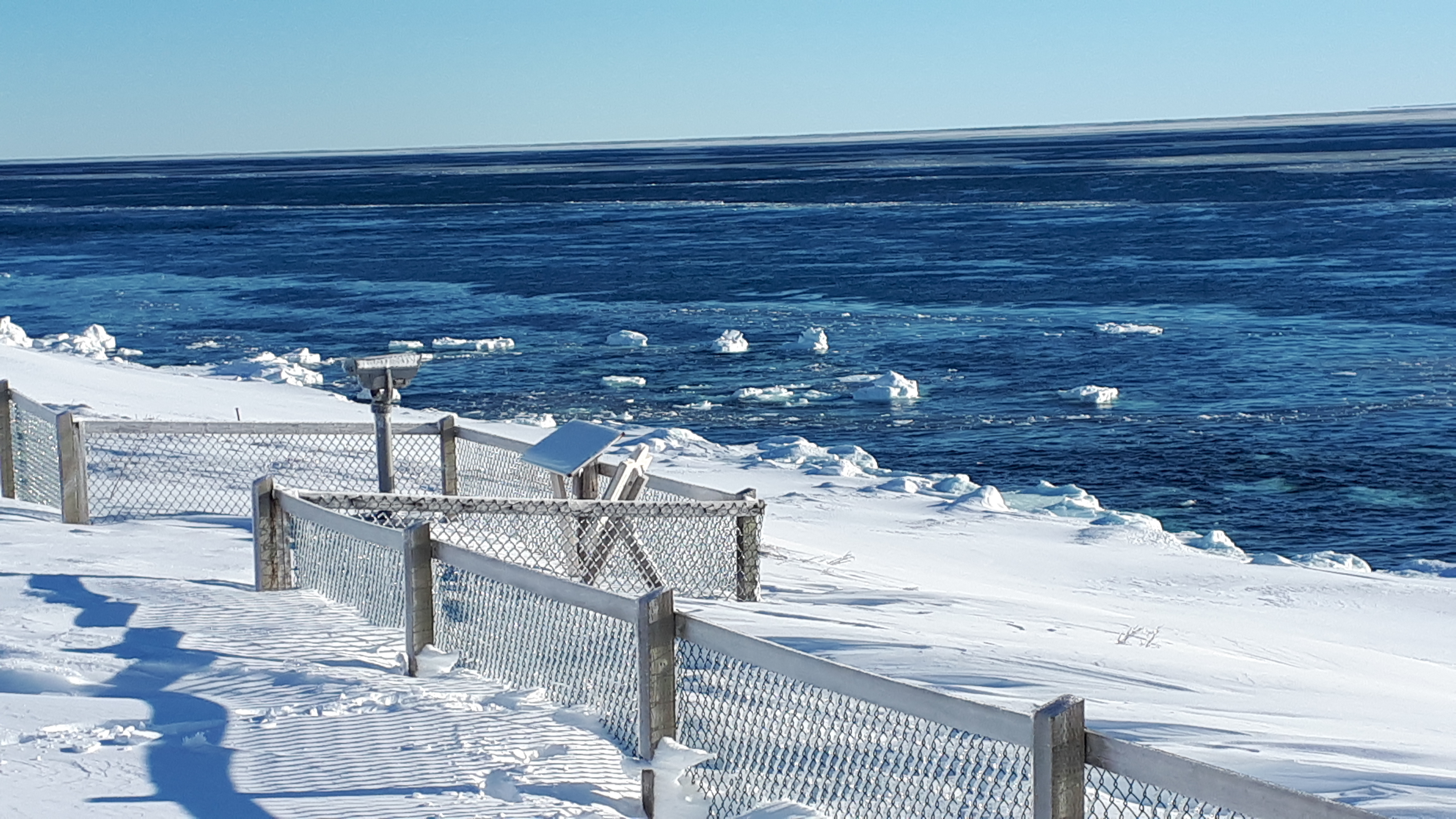


Thursday January 24: Dave and Frank found a local company to plow the road to the lighthouse for us! This made transporting the gear (and us) to and from the lighthouse a LOT easier. After having a few days to assess the site, we decide to scale back from a 3-element to a 2-element vertical array, and put up the NE parasitic and its associated radials.
We were hearing EU as early as 1730Z! EU was workable around 1900Z and runnable around 2100Z.

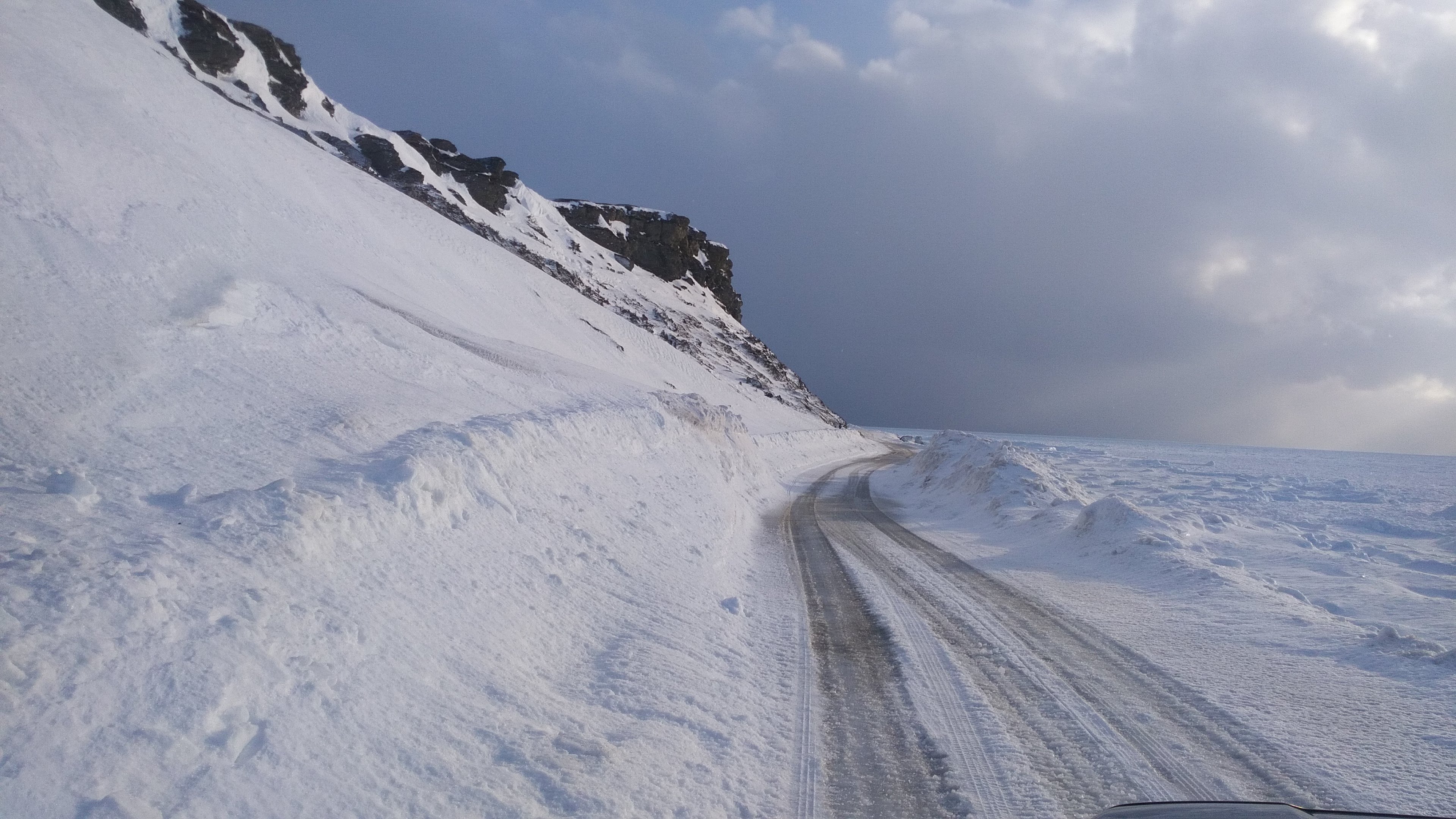
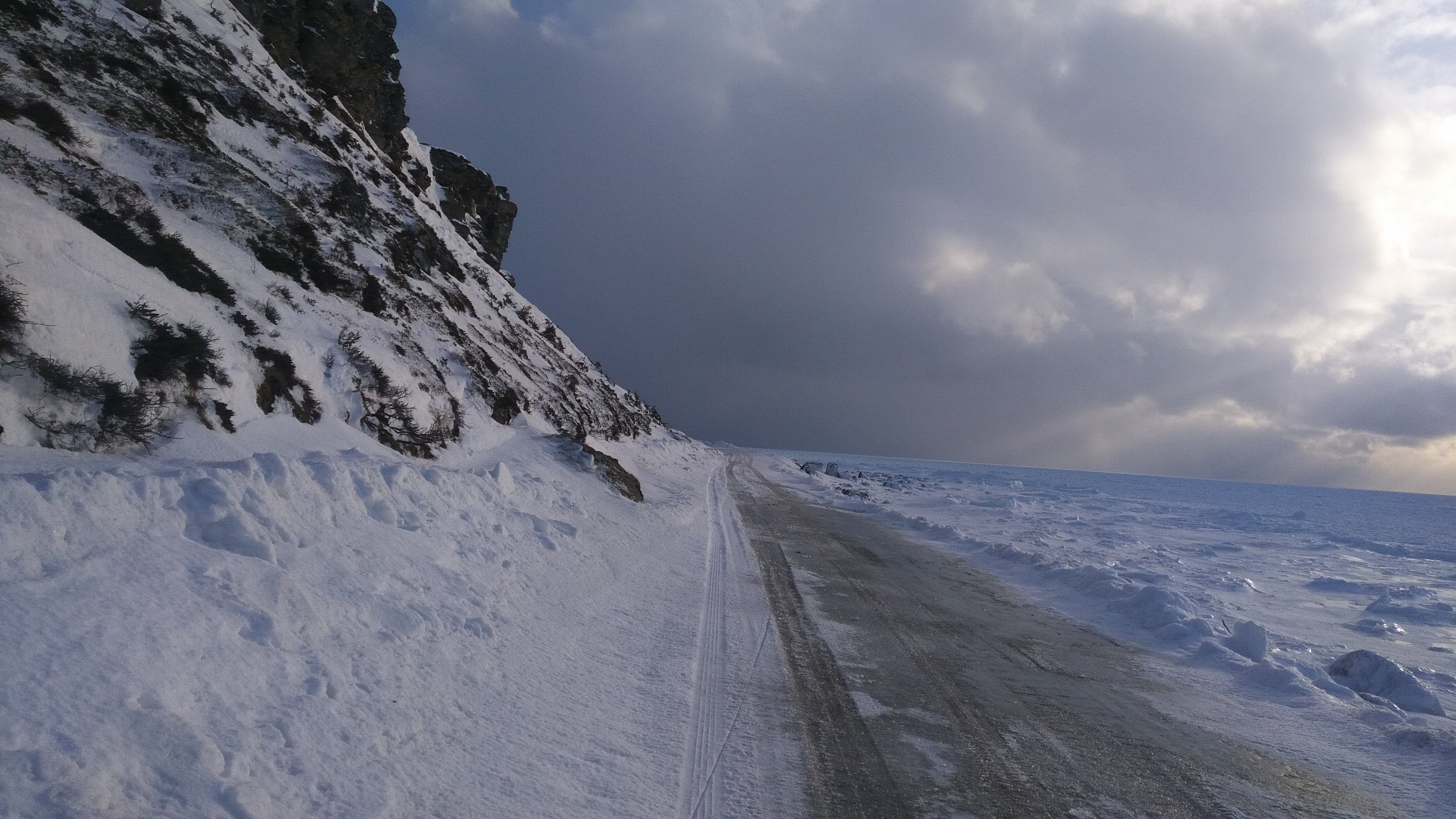
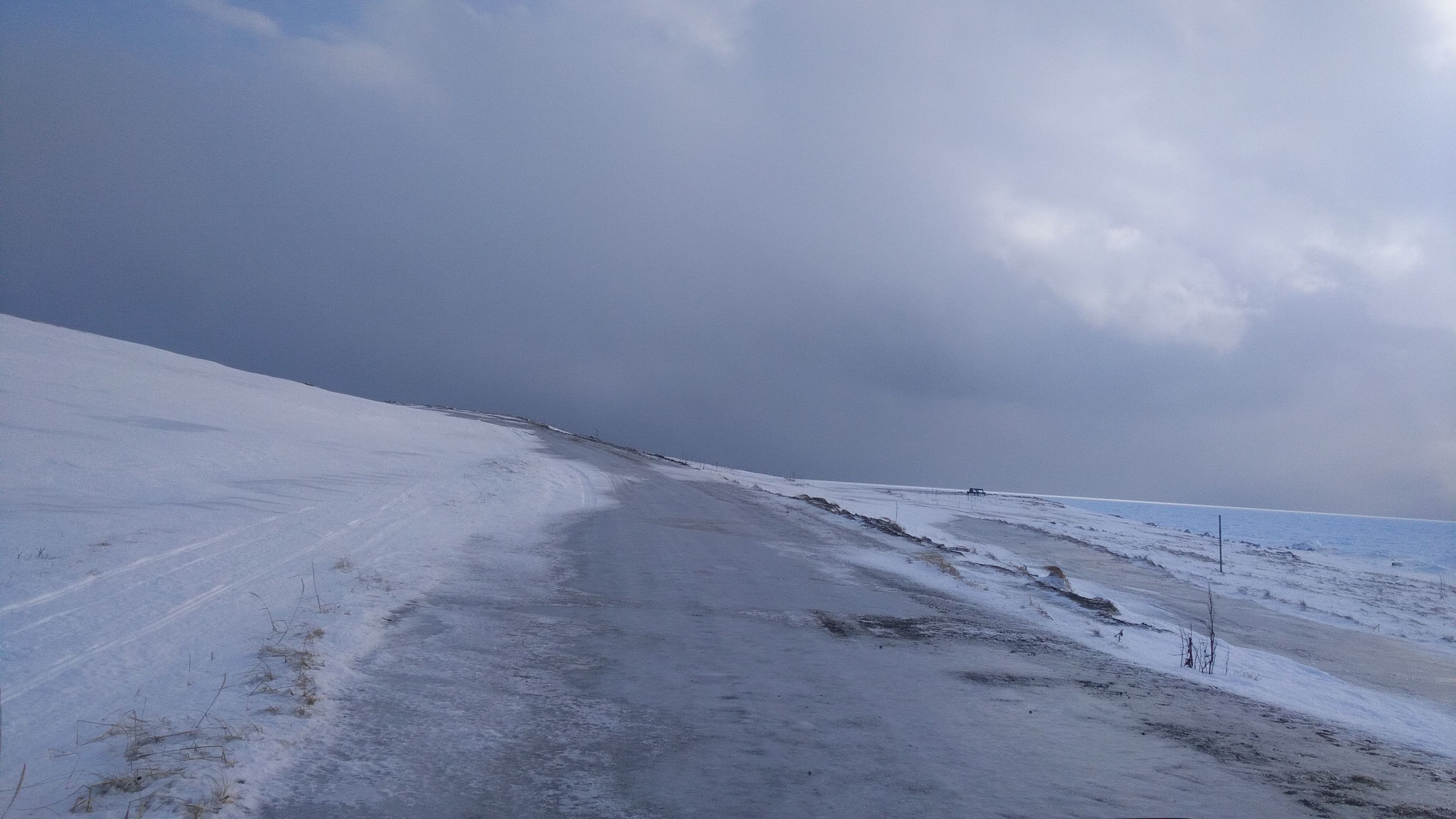
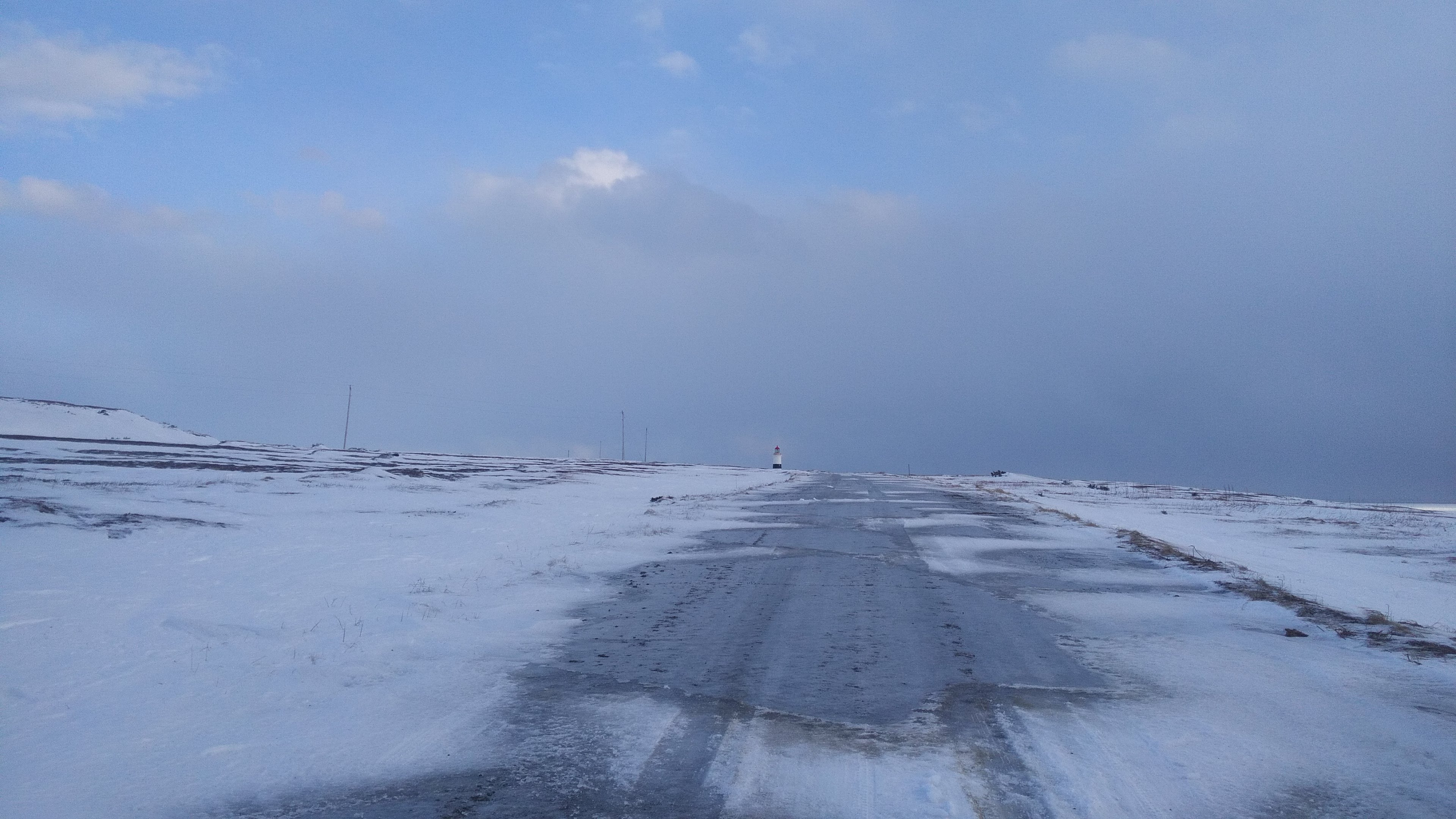








Friday January 25: This was the windiest day we had the entire week were there. We had intended to install two reversible Beverages, but the weather, especially the biting wind had taken its toll on the three of us. Instead we decided to install a 200f BOG (BOS?) Beverage On the Ground (Snow?), courtesy of Frank. Without internet at the site, the BOG also served to provide us with a local skimmer. We spent the rest of the day ironing out the computer network, shopping for food, getting a feel for the band, and resting as much as possible.

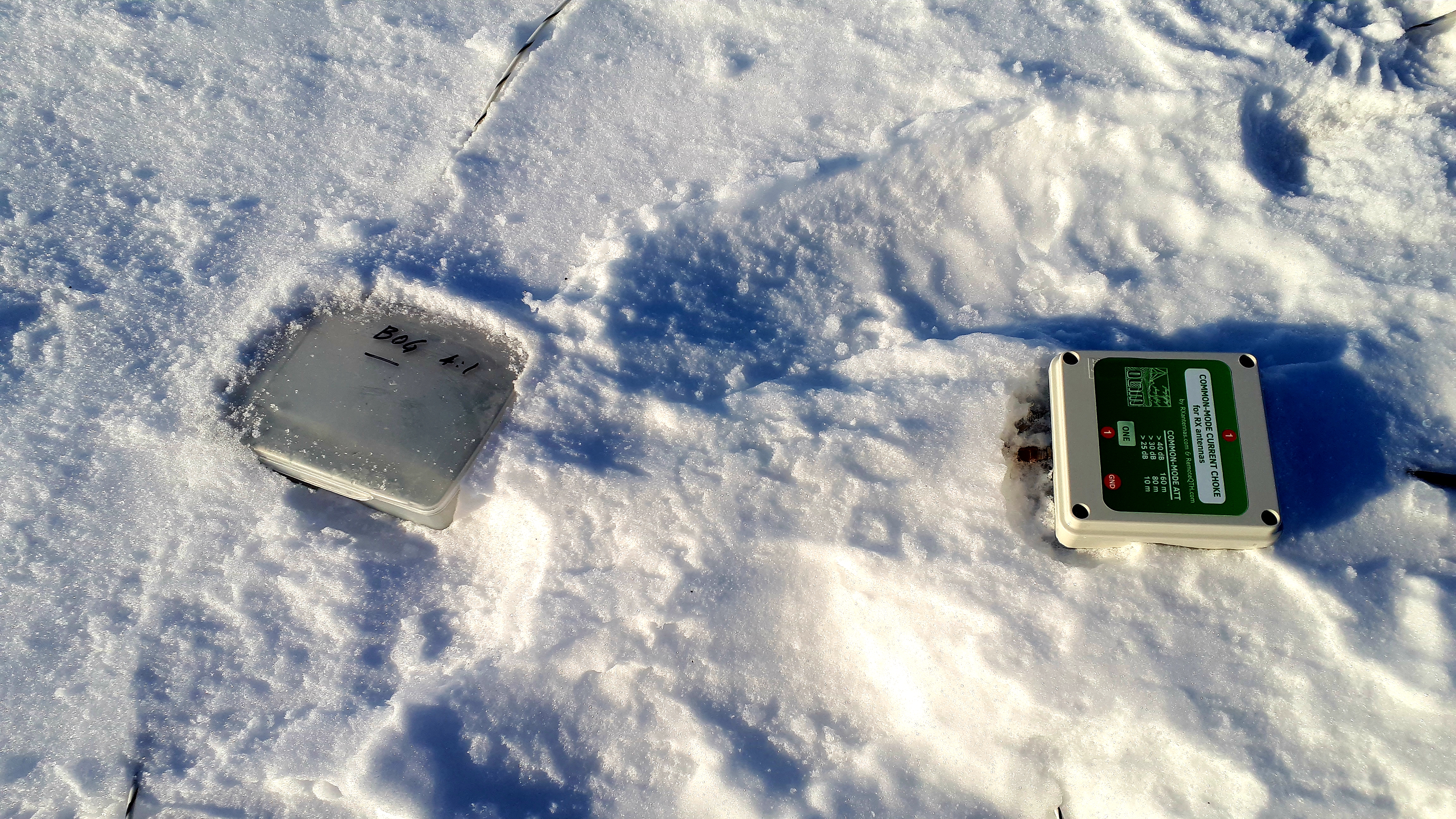

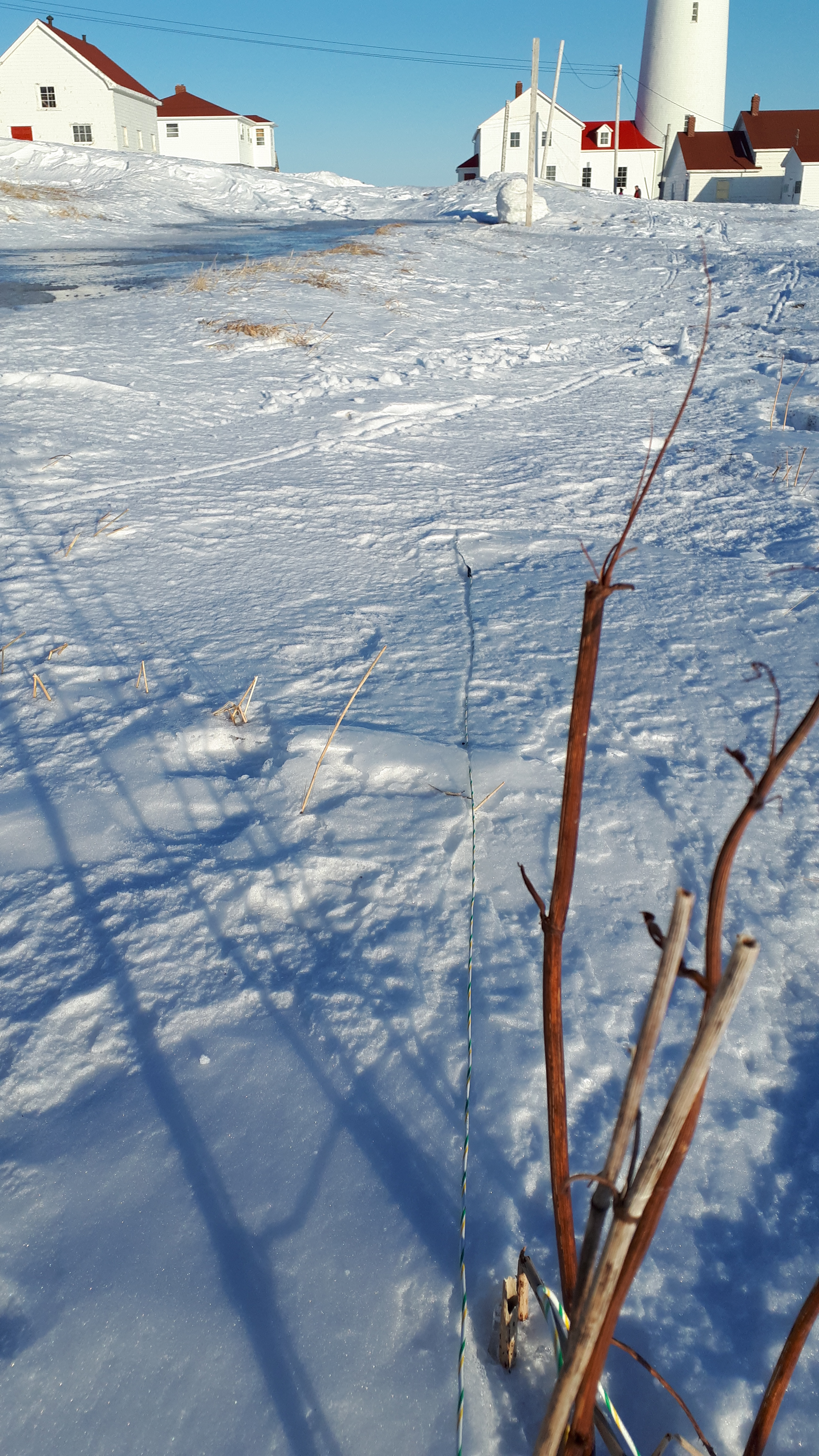
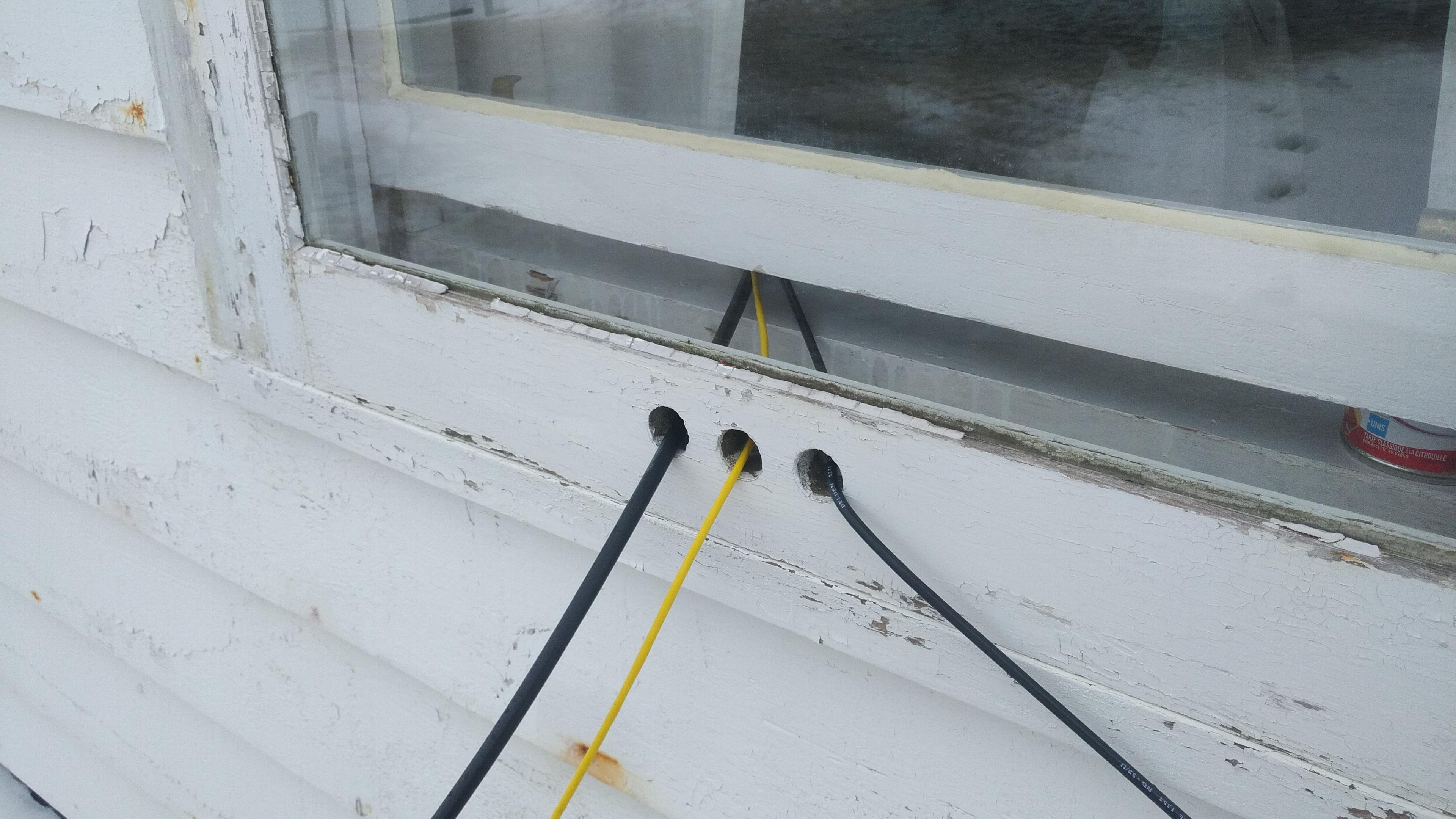
The following video will give you an idea of how windy it was! At times it was difficult to stand up!
The contest started at 2200Z(6:30pm local time). Conditions were good, but not great. We didn't feel loud in Europe. We had rates the first three hours of 98Q/hr, lower than we were expecting / hoping. The Top Ten Devices "Op Swapper" allowed us to share the AL80A amp and TX antenna between both TS-590S radios. Despite condx we kept plugging away, with one station CQing while the other was either in search-and-pounce mode looking for new multipliers and stations to work, or sharing the pileup with the main Run station.
We called it quits for the first night at 1250Z (9:20am local time) and headed back to the hotel in Forteau for some well deserved rest.
The table below shows our point breakdown for the first night:
| # of Points | # of
QSOs |
| 10 |
251 |
| 5 |
463 |
| 2 |
51 |
Saturday January 26: After heading back to the station and listening on the bands, we noticed that something wasn't right with the TX antenna. A closer look revealed that the incessant wind broke the wire at the base of the parasitic element and somehow disconnected a good number of the radials. With daylight on our side, we decided to take down the parasitic rather than in the darkness after the contest was over.
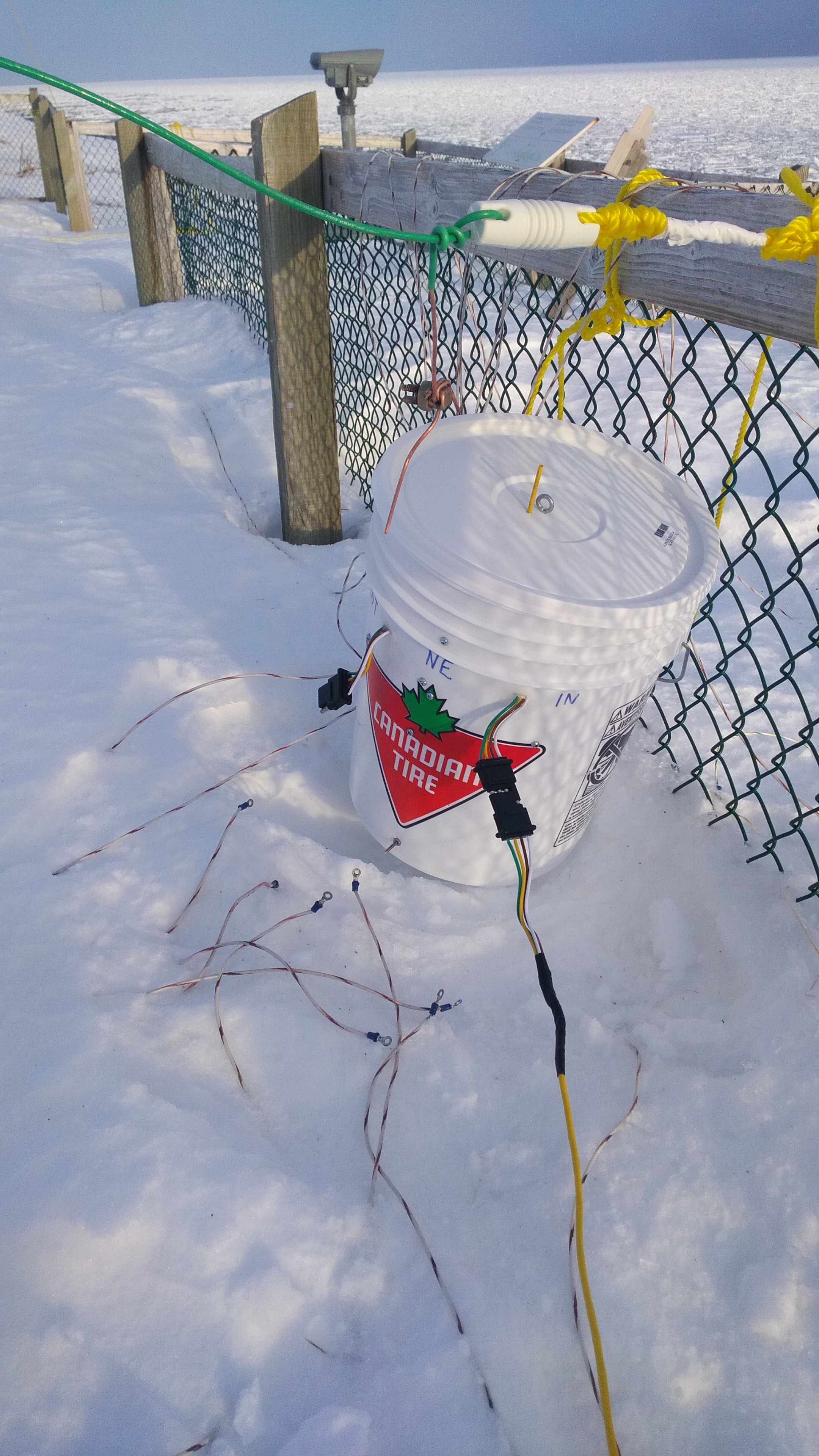
Our first QSO of the afternoon was at 1910Z (3:40pm local time)but we weren't able to start running with any appreciable rate until 2000Z (4:30pm local time). As expected rates were somewhat slower on the second day. The first hour we rate was 45 Q/hr but picked up to 75Q/hr in the second hour. Condx seemed to have picked up.
Around 0730Z (4:00am local time) we lost power at the lighthouse! We scrambled to see if we'd tripped a breaker, but unfortunately we hadn't. We reported the outage to the power company and stuck around for about 45 minutes, but it started to get cold, so we left. When we reached L'Anse Amour we could see that the power was off there as well. During the drive back to the main road we nearly drove over the downed power line that was in the middle of the road.

A few minutes later a power company vehicle showed up and the driver told us that it would be several hours before the line would be fixed, so we went to our hotel and slept. We missed ~4 hours of good operating time, including the later part of EU sunrise, all of NA sunrise, and our greyline to VK, ZL, Pacific, etc.
Below is our point breakdown for the shorted second night:
| # of Points | # of
QSOs |
| 10 |
322 |
| 5 |
249 |
| 2 |
13 |
Sunday January 27: We returned to the lighthouse early in the afternoon to get a start on packing up equipment we wouldn't need in the last few hours of the contest, leaving only the essentials. The wind had calmed and the sun came out.
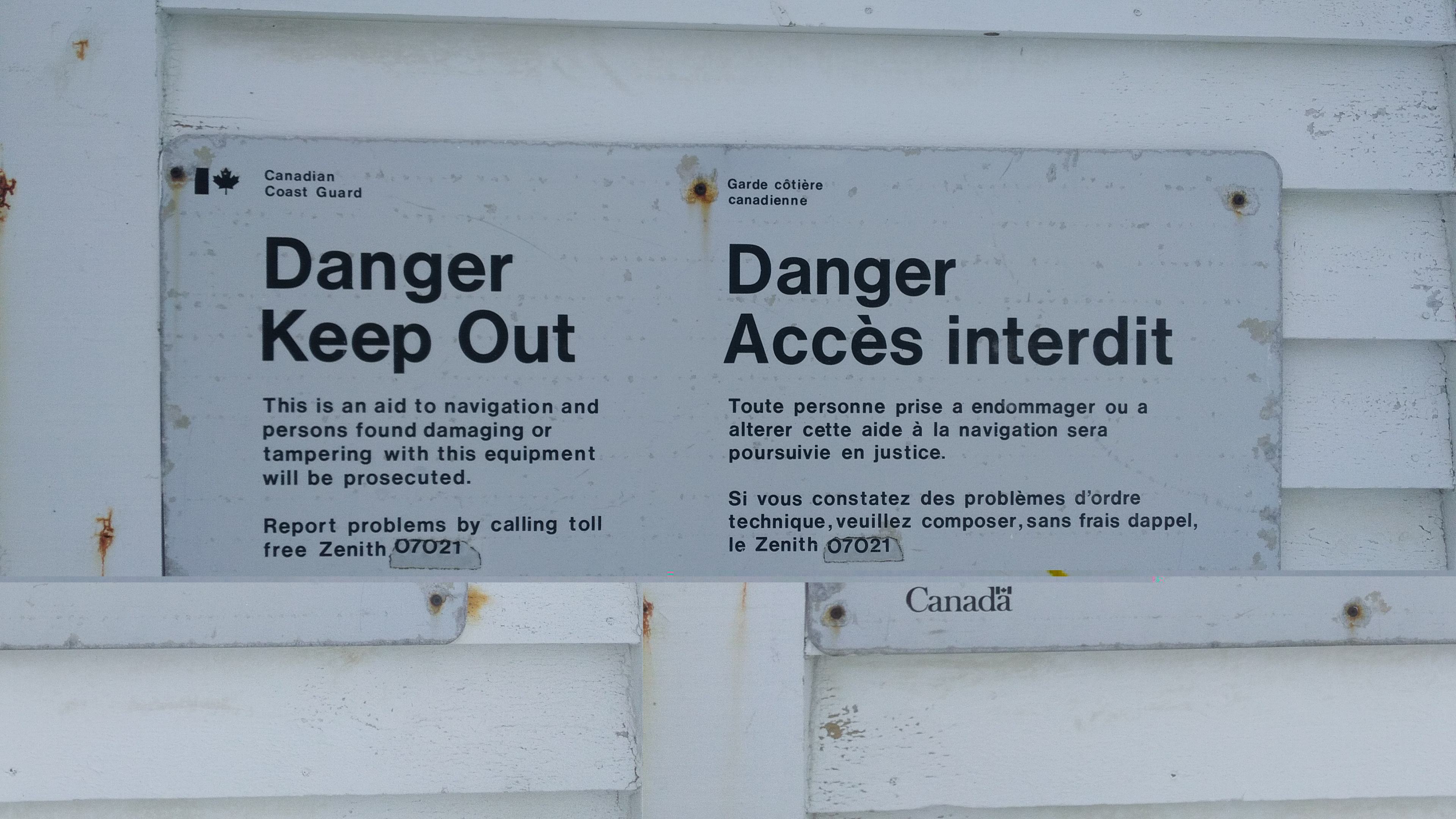

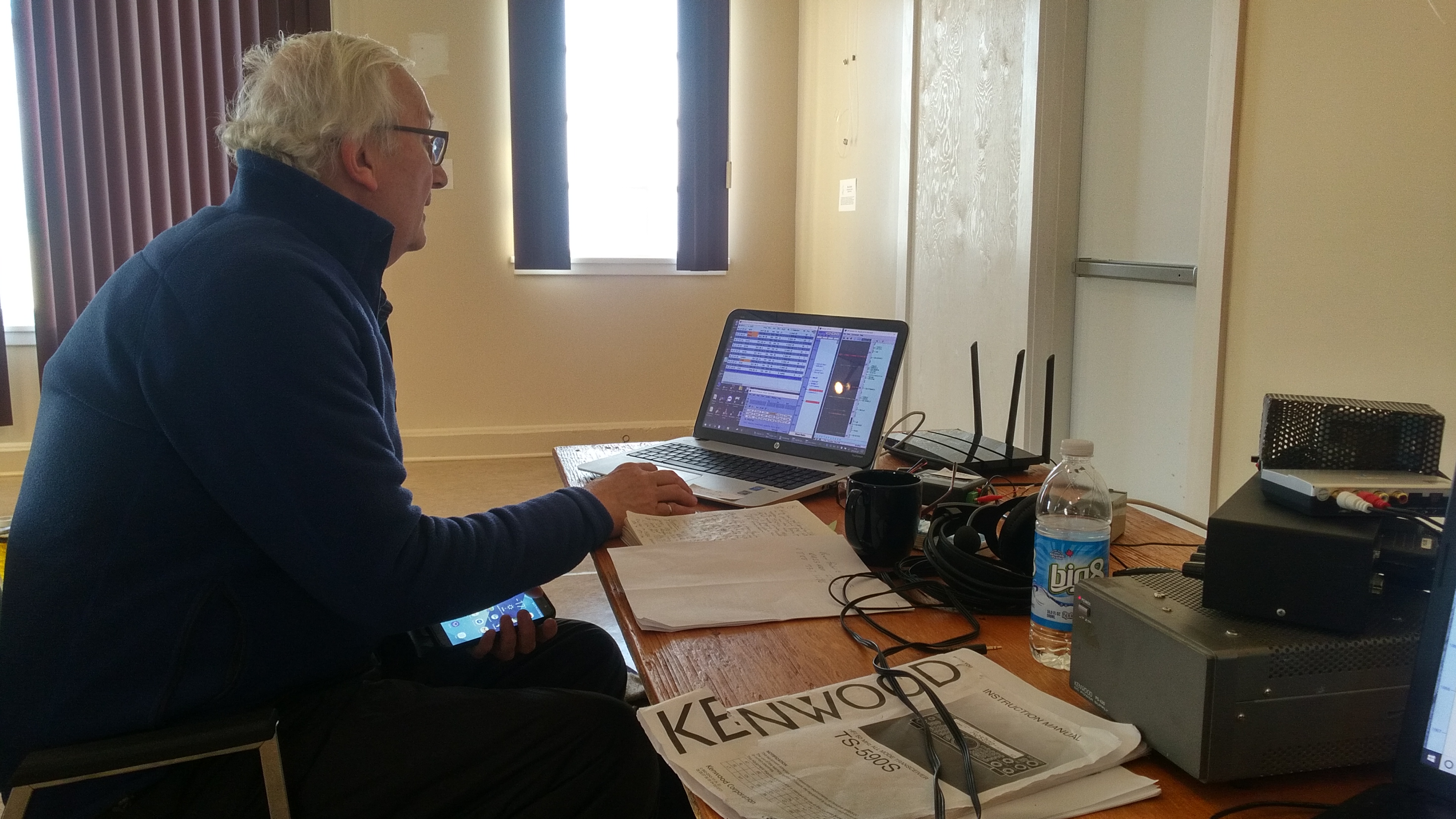



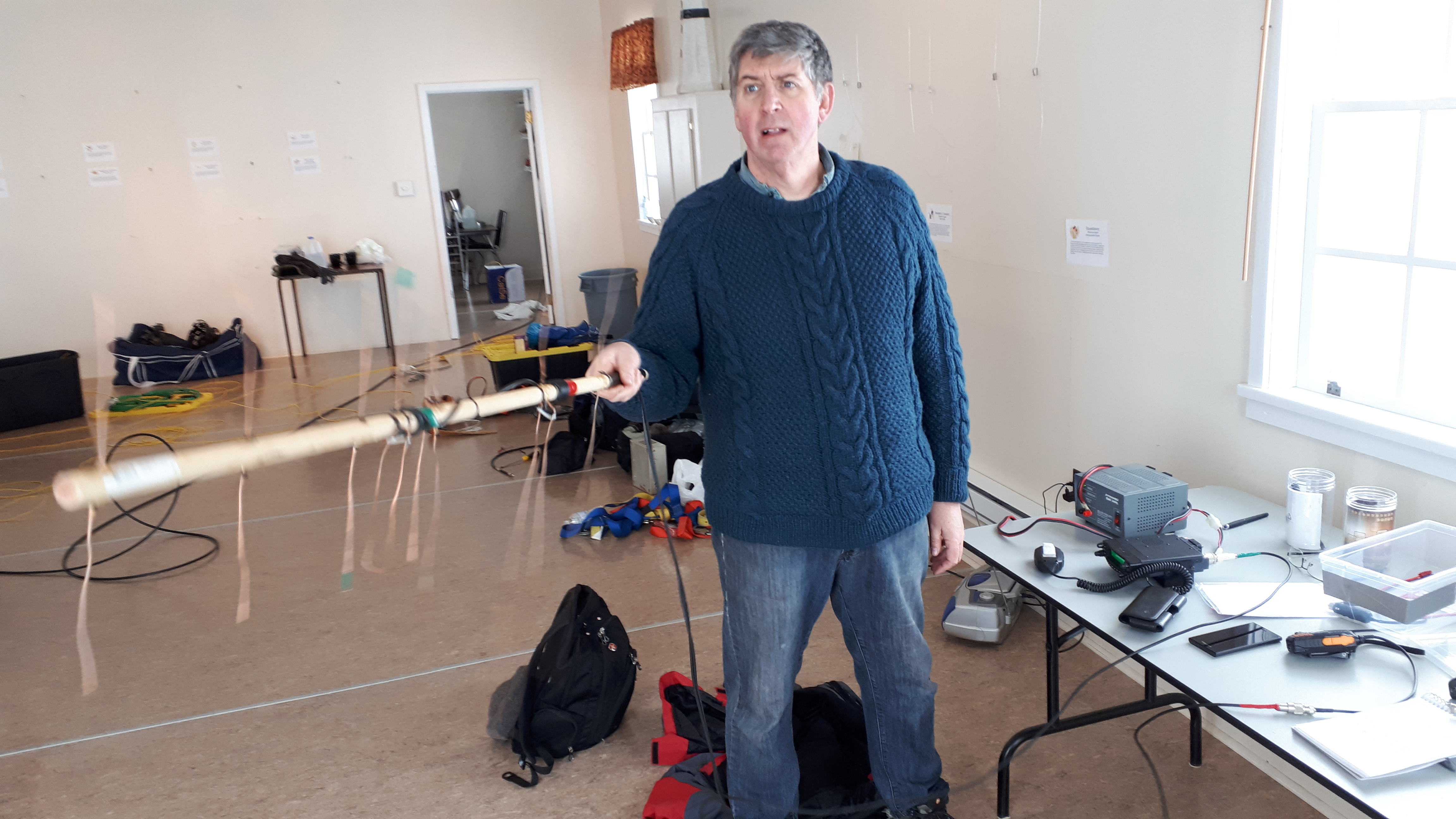
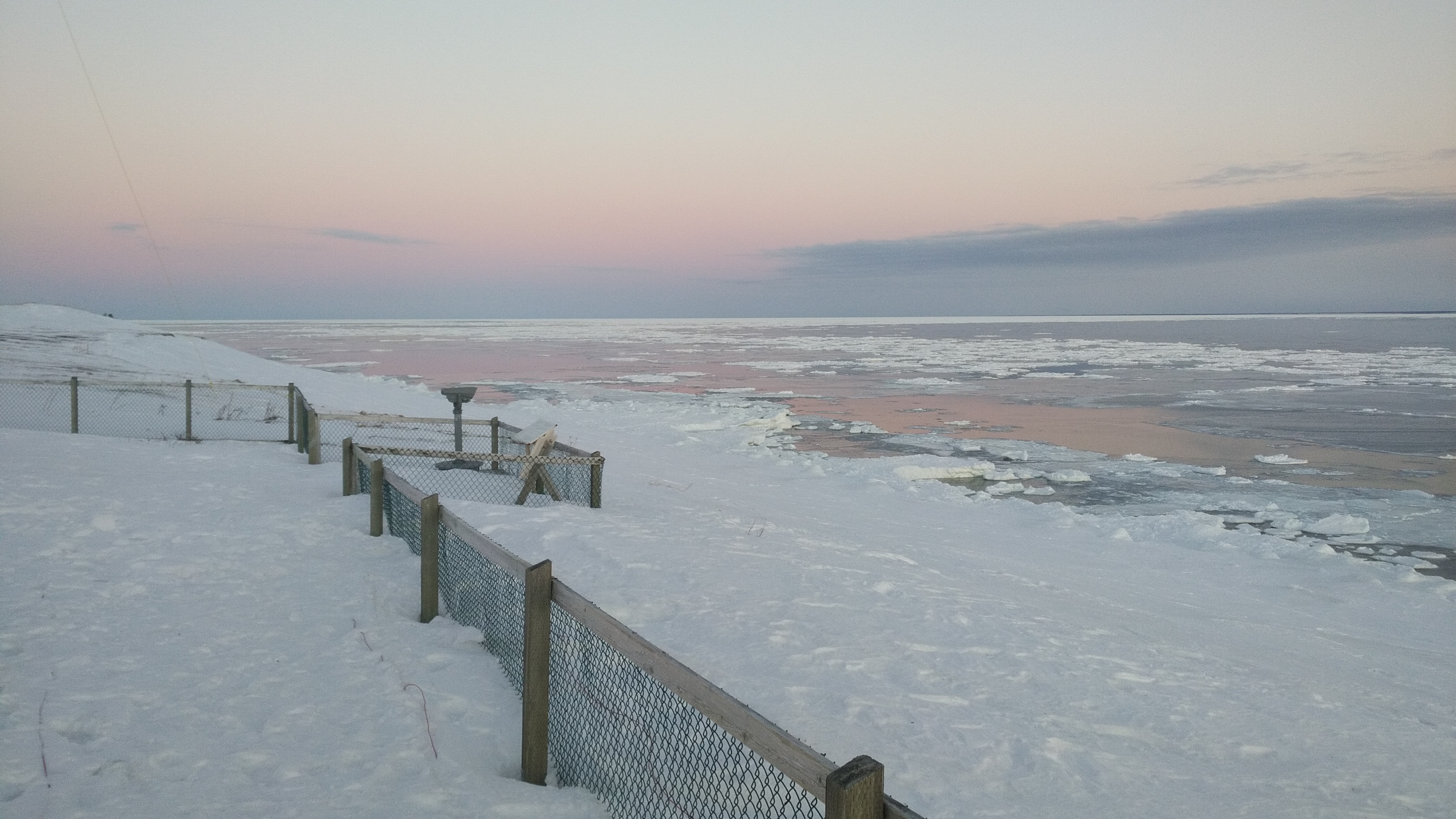

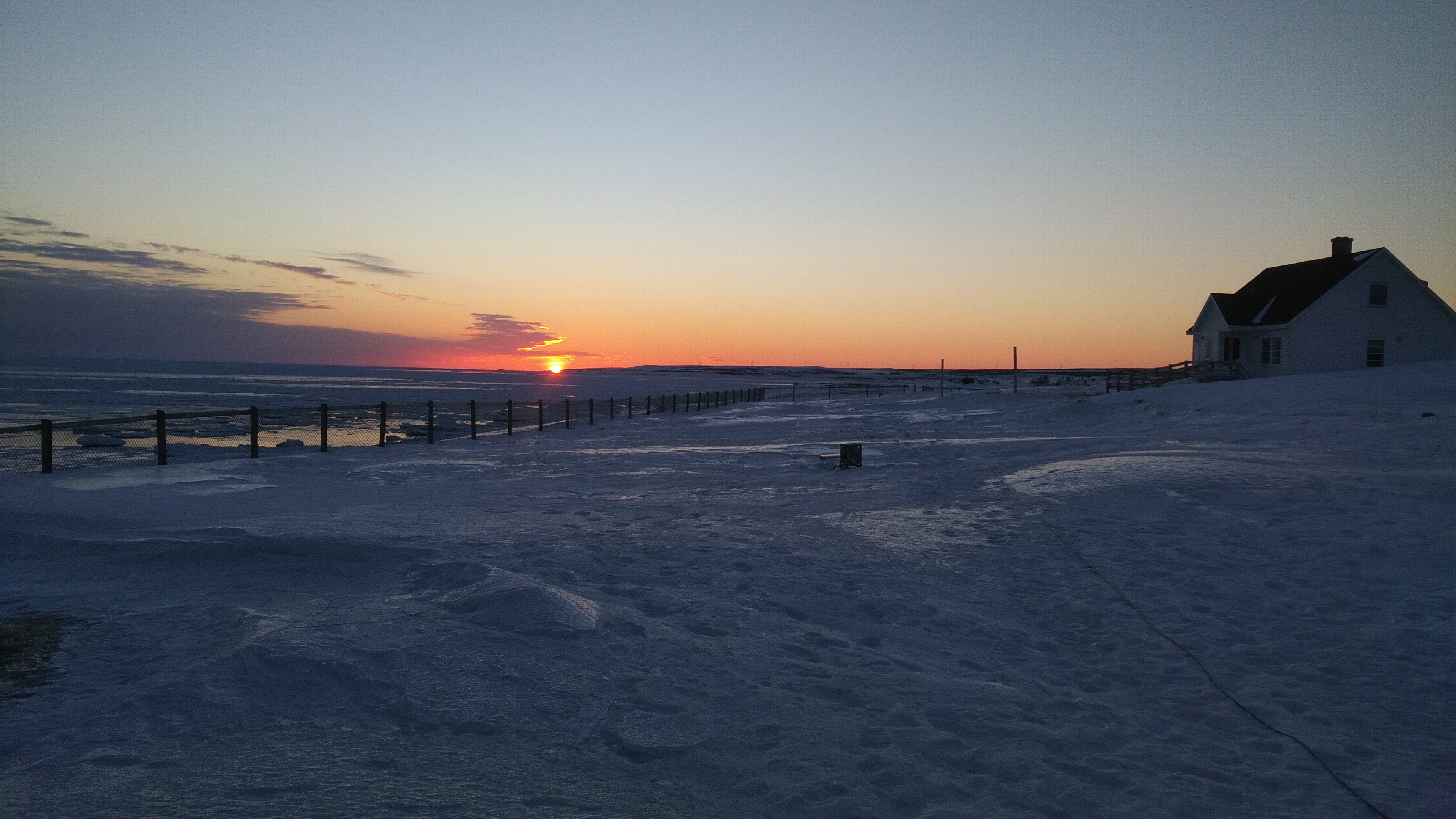
We were able to make QSOs late Sunday afternoon / evening during the final 3 hours of the contest, ending with the following claimed score:
| QSOs | 1349 |
| States |
46 |
| Provinces |
8 |
| Countries |
72 |
| Score |
1,186,038 |
Our score is down from our 2006 score (~1.4M pts, #1 Multi-Op) but should place us in the top 10 Multi-Ops.
In Canada, we missed VY2 and VE4 like everyone else, which should have been easy, as well as VY0, VY1, VE8, and VO2(!). In the US, we missed NE, SD, and WY. I like to believe we would have worked those states if we hadn't lost the power :=) The only country we heard but didn't work was CE (CE3CT).
| Continent | QSOs |
| North America | 785 |
| Europe |
537 |
| Africa |
10 |
| South America |
8 |
| Asia |
6 |
| Oceania |
3 |
Highlights:
1 - During the 3 day drive to Point Amour, we activated some rare grids on the FM satellites. When he wasn't operating, and the timing was right, Dave also made some satellite QSOs from the lighthouse.
2 - Working ID! When Dave and I were at Point Amour in 2006, we worked all states except ID. We've now completed 160m WAS, but not all in one contest (yet!).
3 - Working ZL (ZM4T)! In 2006 we heard and called ZL6QH, but the best he could copy was "O2A?"
4 - EU was LOUD! GM5X and DL6FBL, as well as others, were S9 at 1945Z(4:15pm local time)! Yet for some reason we had difficulty working LX7I and Z66X. Despite many calls to both of them the first night, they weren't worked until 2011 and 2252 of the second night respectively.
Here's a video of DL6FBL at 1945Z. Someone in NA had spotted him on the DX cluster as 519!
The contest ended at 6:30pm local. By 9:30pm we had the antennas down, station packed up, and everything loaded in the truck for the 3 day drive back home.
Monday January 28: Frank arranged for a ride to the Blanc Sablon airport for his flight back to St. John's, while Dave and I drove th ~600km to Happy Valley - Goose Bay.
Tuesday January 29: Dave and I drove the ~1100 km from Happy Valley - Goose Bay to Baie Comeau, QC.
Wednesday January 30: After being left for 8 days at the hotel, this was Dave's car just before we transferred his gear from my SUV to his car.
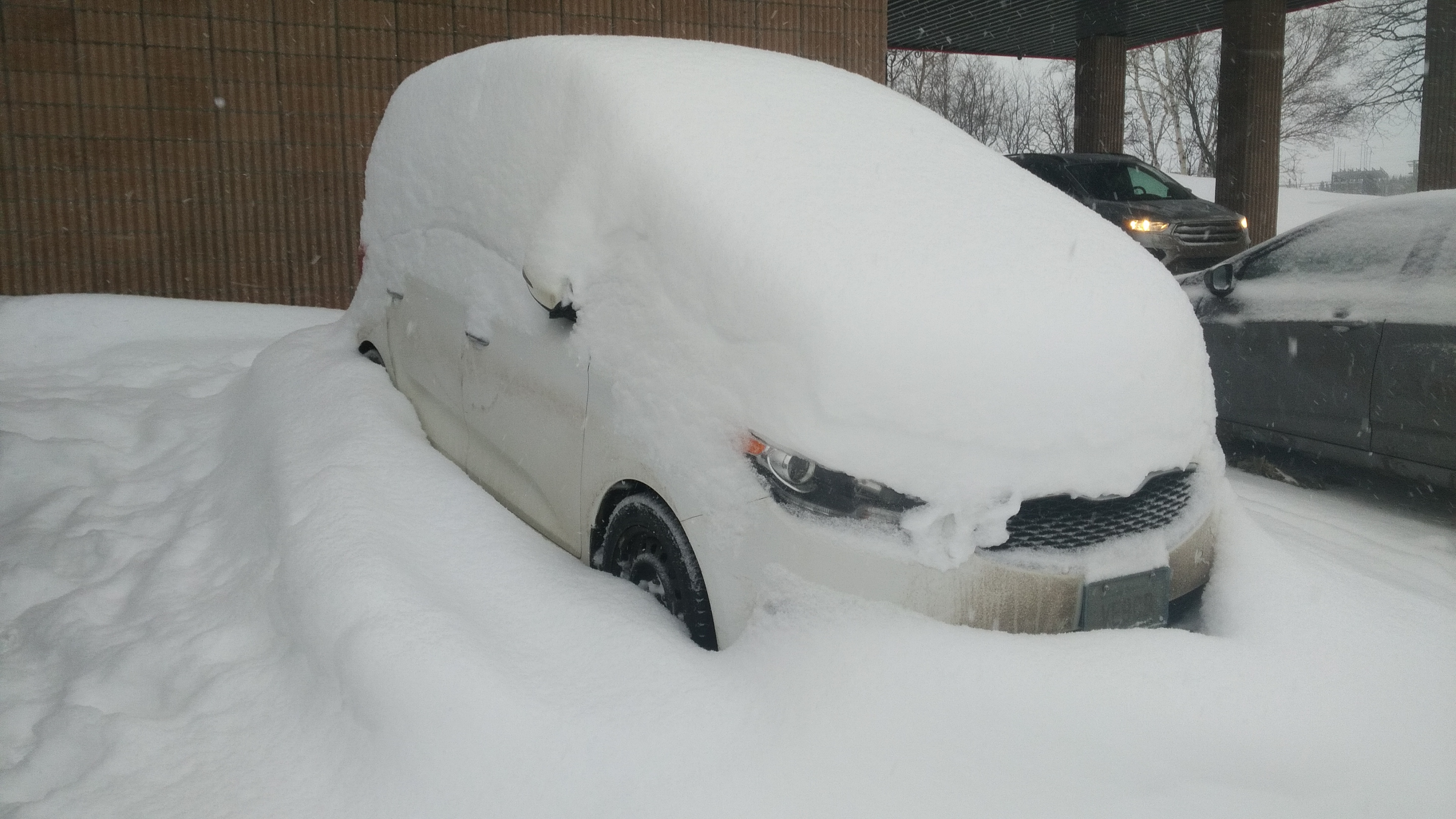
I drove the final ~900km from near Baie Comeau, QC to my home near Ottawa, ON to Baie Comeau, QC. Due to a winter storm and problems with the Baie-Comeau to Matane ferry, Dave didn't make it home until the following day.
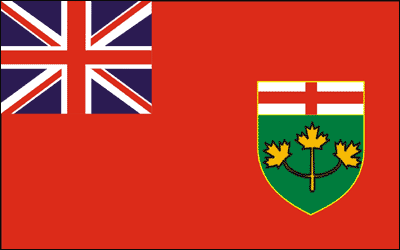 VE3FU /
VE3FU / 